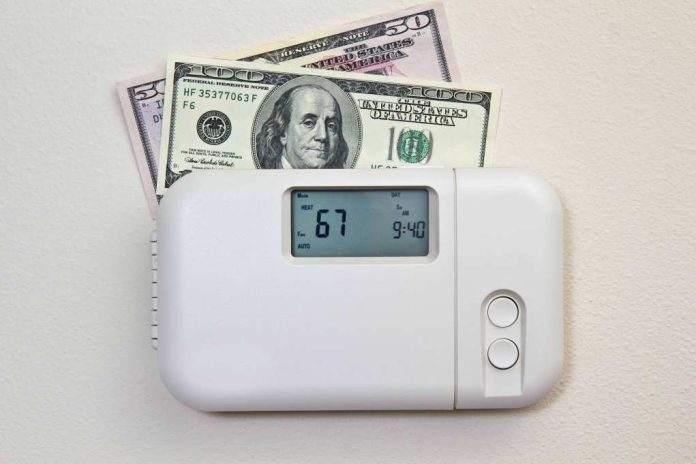Utility bills are annoying for everyone, especially if your energy is not working well. Additionally, you might have had a few instances where your heating system breaks down in the middle of winter or where your cooling system breaks down in the middle of summer. If that sounds familiar, do not worry. You are not alone in this struggle; some people go through it on a daily basis. Fortunately, there is an easy way to resolve this problem. You can apply for the Low Income Home Energy Assistance Program (LIHEAP).
The Federal Government wants to do its part in helping the people, which is why they designed welfare options that provide assistance in home repairs and utility bills. That welfare option would be the Low Income Home Energy Assistance Program (LIHEAP). The LIHEAP offers financial relief for low-income households and individuals to prevent any issues that can be related to home repairs. You do not need to look through YouTube videos on how to fix your heater.
If you want to apply for the Low Income Home Energy Assistance Program (LIHEAP), then you will need to ensure that you meet the eligibility criteria. Once you meet the requirements, the Program can accept you as a candidate. It is not as easy to find as a DIY YouTube video, but it is worth a try. This article will tell you everything you need to know about the Low Income Home Energy Assistance Program (LIHEAP).
Low Income Home Energy Assistance Program (LIHEAP)
There are several bill assistance programs that can help eligible American households. One of the most common assistance programs is the Low Income Home Energy Assistance Program (LIHEAP). This Program helps low-pay families and individuals to pay for home energy services and pay their utility bills. You need to qualify to receive assistance from the Low Income Home Energy Assistance Program (LIHEAP). This means that you need to fall within the Low Income Home Energy Assistance Program (LIHEAP) income guidelines. One of the Program’s main goals is to decrease the risk that follows with unsafe cooling and heating use. The Federal Government is responsible for funding this Program. But, the state government is responsible for defining the coverage and budget of the Program.
Generally, the Low Income Home Energy Assistance Program (LIHEAP) can help you with financial relief for:
- Cooling and heating energy expenses.
- Utility bill assistance for low income households.
- Home repairs and energy-related repairs
- Emergency support for energy-related practices
Every state operates differently, but there are a lot of states that provide energy-related home repair assistance. This form of assistance also includes home weatherization. States offer these types of assistance options for low-income families to help them and decrease the consistent energy expenses per home. The Low Income Home Energy Assistance Program (LIHEAP) offers funds to eligible households, but you cannot typically use these funds for sewer and water bills. However, you might find that there are exceptions to this rule, in the case that you use water to operate an air conditioner. If you need immediate home repairs, then you should consider this Program.
How Does The Low Income Home Energy Assistance Program Operate?
The Low Income Home Energy Assistance Program (LIHEAP) is a welfare program that the Federal Government funds. This Program provides financial assistance for energy expenses to eligible households and individuals. But, you will need to ensure that you qualify to receive assistance. The LIHEAP offers one-time funds to qualifying households to help them with temporary energy assistance. State governments are responsible for implementing the Low Income Home Energy Assistance Program (LIHEAP). If you want more details on the Program, you can reach out to your state’s Department of Social Services.
Your local Low Income Home Energy Assistance Program (LIHEAP) office will inform you of all the things you need to know about the Program. This will include: the eligibility criteria, the application process, and the paperwork you might need. The local office for the Program can answer all of your questions. Keep in mind that once federal funding runs out, then the Program might not accept any more applications. However, this depends on your state and how they operate the LIHEAP. (You should ask your local LIHEAP office about that, too).
LIHEAP: Eligibility Requirements
If you are interested in the Low Income Home Energy Assistance Program (LIHEAP), then here is a neat little trick. You might be automatically eligible for other welfare Programs because you are eligible for the Low Income Home Energy Assistance Program (LIHEAP). Other welfare options that you could automatically qualify for are: the Supplemental Nutrition Assistance Program (SNAP), Temporary Assistance for Needy Families (TANF), or Supplemental Security Income (SSI). But, every state operates differently, so you might want to confirm that you qualify before you do anything else!
You should remember that if you exceed the maximum income level, then you are automatically disqualified for the Program. If you are eligible, then you should keep reading to find out how to apply for the Low Income Home Energy Assistance Program (LIHEAP). In the case that you are not eligible, there are alternatives for your current situation. Keep in mind that the Program also accepts renters as eligible candidates. If you fit the criteria, then the Program accepts both public-housing tenants and subsidized-housing tenants.
Applying for the Low Income Home Energy Assistance Program
If you want to apply for the Low Income Home Energy Assistance Program (LIHEAP), then you should contact your local LIHEAP office. However, your state could also provide the opportunity to apply for energy assistance online too! But, you will need to stay in contact with your local Low Income Home Energy Assistance Program (LIHEAP) office throughout the application process. The first step that you need to do when applying for the LIHEAP is to locate your local office for the Program. Thankfully, the US Department of Health and Human Services offers a Local Income Home Energy Assistance Program office locator. With the office locator, you can find the nearest local office in your area. Once you find the local office for the LIHEAP, then you can request energy assistance.
Each state works differently when it comes to administration of the Program. You might find additional eligibility requirements, depending on your state. You might find that one state requires a component for eligibility that is optional in another state. This is why it is important to reach out to your local LIHEAP office. That way, you will know how to apply and the way your state operates the Low Income Home Energy Assistance Program (LIHEAP).
Overall
In conclusion, you should really consider applying for the Low Income Home Energy Assistance Program (LIHEAP). In the case that you need immediate home repairs that you cannot afford or you have an issue with your energy systems, the LIHEAP can really help you. You will receive one-time funds to help you solve your energy issues from the Low Income Home Energy Assistance Program (LIHEAP). However, you need to make sure that you qualify for the Program, so you can receive benefits. It is really easy to apply and even easier to find out if you qualify.














